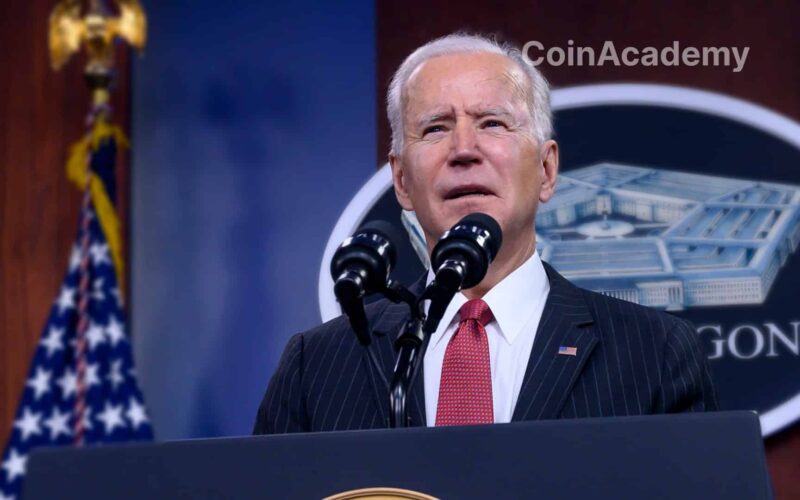US job creation unexpectedly plummets to 12,000 in October
The US job market experienced a significant slowdown in October, with only 12,000 jobs added, well below the forecasted 113,000. This marks the lowest level of job creation under the Biden administration, highlighting the Federal Reserve’s precarious position and increasing expectations of a 0.25% rate cut at its next meeting. Analysts are even speculating about the possibility of larger monetary adjustments if the weakness in the job market persists.
The financial markets reacted swiftly to this unexpected decline. Stock indices such as the S&P 500 and Nasdaq Composite posted gains, while Treasury yields dropped, the dollar slightly decreased in value, and safe-haven assets like gold and Bitcoin saw price increases.
🚨 The US only created 12,000 jobs in October, far from the expected 113,000. pic.twitter.com/XPd6WR1I8G
— Coin Academy (@coinacademy_fr) November 1, 2024
Unexpected drop in job creation in the US
Just four days before the presidential elections and the Federal Reserve meeting, the October employment figures in the US revealed a significant slow-down. According to the report from the Bureau of Labor Statistics (BLS), only 12,000 jobs were added, well below the initial forecast of 113,000. This figure represents the lowest job creation recorded under the Biden administration, affected by a combination of economic and climatic factors.
The BLS also revised down the previous months’ figures, with September dropping from 254,000 to 223,000 and August from 159,000 to 78,000 created jobs. Several factors contributed to this disappointing performance, including recent hurricanes and an ongoing strike at Boeing, which temporarily disrupted the job market.
Tensions surrounding US economic policies
This weakness in employment figures immediately fueled political debate. Donald Trump’s campaign seized on it to criticize the current administration, while President Biden downplayed it, emphasizing the resilience of the American economy against temporary shocks. The Boeing strike, involving over 33,000 employees, and the impact of storms on states in the Southeast, particularly in Florida, have indeed slowed down hiring in several sectors.
Key sectors such as construction, retail, hospitality, and finance stagnated in terms of job creation, indicating a pause in activity. Nevertheless, economists highlight that these circumstantial elements, though significant, should not permanently affect the job market, giving hope for a resumption of hiring in November, particularly with post-hurricane reconstruction efforts.
Movements in interest rates: The Federal Reserve facing tough choices
The markets were already anticipating a slowdown in employment due to recent disturbances, but the extent of the decline now puts the Fed in a delicate position. This report weakens economic prospects, reinforcing expectations of a 0.25% rate cut at the upcoming Fed meeting next week. Treasury bond yields reacted instantly, dropping by four basis points, while the dollar slightly retreated.
Analysts believe that this hiring slowdown supports the Fed’s desired “soft landing”: managing inflation without precipitating the economy into a recession. However, if weakness in the job market continues in the coming months, larger monetary policy adjustments may be necessary.
Financial market reactions vary
Despite the gloomy numbers, stock markets responded positively. Both the S&P 500 index and the Nasdaq Composite posted gains, reflecting investors’ optimism regarding rate cuts. Safe-haven assets such as gold maintained their appeal, with the precious metal approaching record highs at $2,767 per ounce, while cryptocurrency markets, with Bitcoin at $70,000, showed increased volatility, quickly surpassing $71,000.
The interest rate situation and job creation trends will continue to heavily impact the economy and influence the electoral campaign. For many observers, the October report is merely a temporary setback, but it could weigh on the Fed’s strategy in the months to come.




